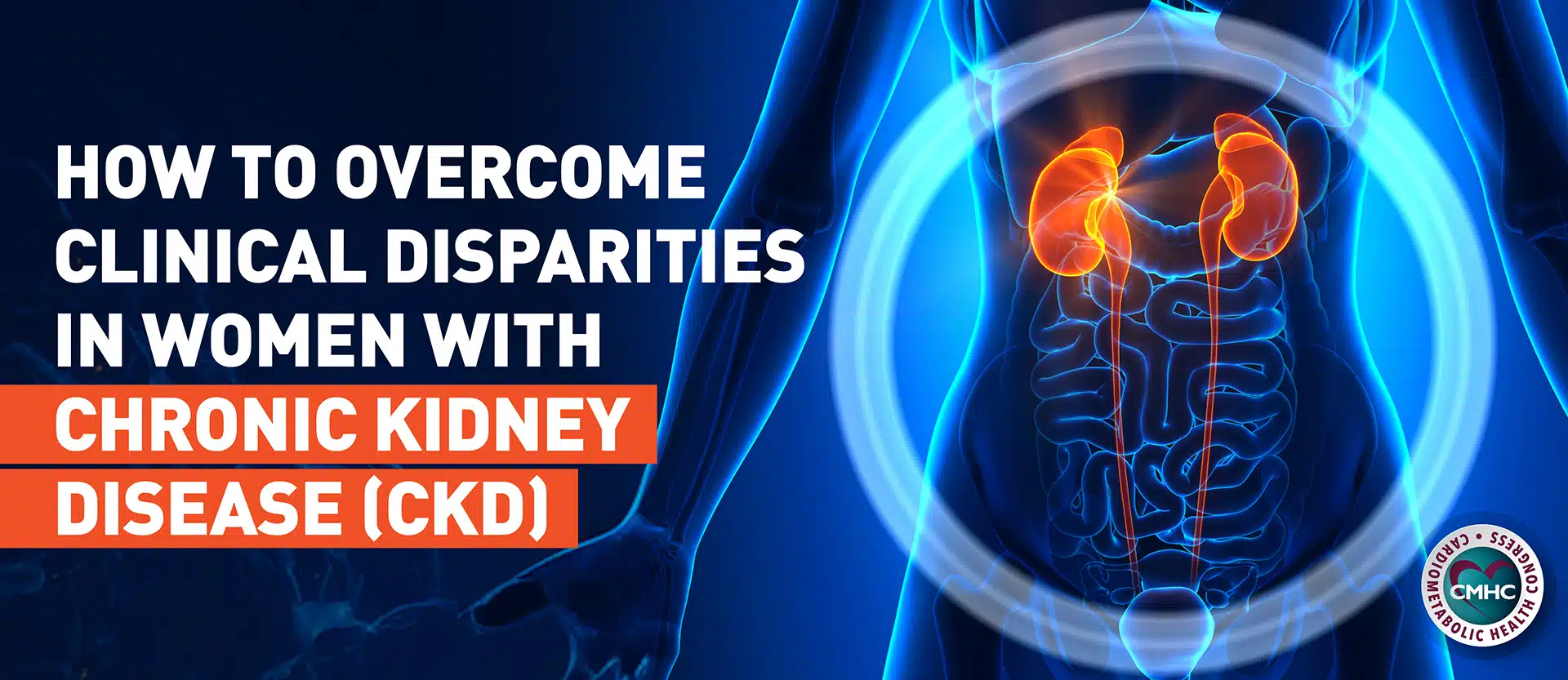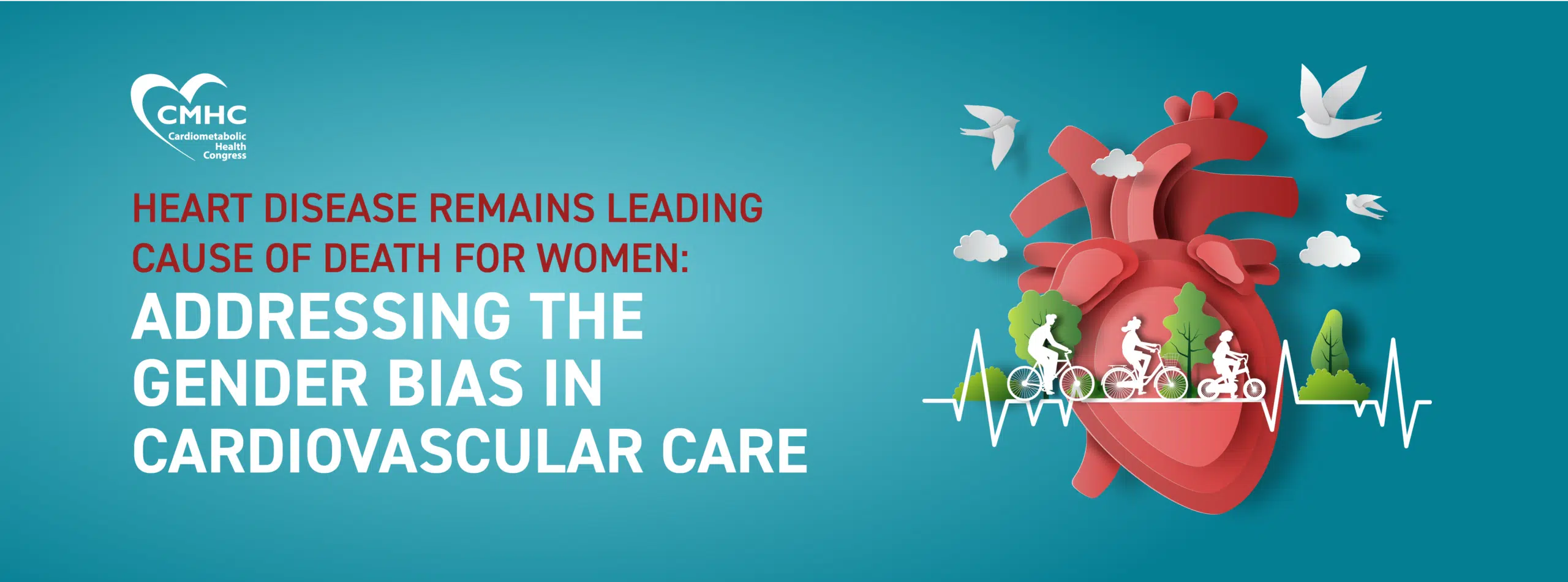Overall, the prevalence of cardiometabolic disorders is increased worldwide in both men and women and has been linked to rising obesity rates and associated risk factors, such as hypertension and type 2 diabetes mellitus. However, growing evidence suggests sex hormones, sex-specific molecular mechanisms, and gender can influence glucose and lipid metabolisms thus impacting cardiometabolic risk factors. There is also an emerging predominance of common types of cardiometabolic disorders such as heart failure, atrial fibrillation, and ischemic heart disease that differ between male and female patients. Significant sex-specific variations have been reported in risk profiles that warrant closer attention.
Disparities in Overall Cardiometabolic Risk
The overall incidence of cardiovascular disease has been known to be higher in men than in women of a similar age, yet the gender disparity becomes more prominent at a younger age. However, female patients with coronary artery disease are reported to have a worse cardiovascular risk factor profile that puts them at an increased likelihood of developing further disease.
As part of the EUROASPIRE IV trial of hospitalized patients with coronary artery disease, researchers analyzed data to determine that the prevalence of multiple cardiovascular risk factors – smoking, obesity, high blood pressure, high LDL cholesterol, and diabetes – was significantly higher in female patients. They reported that the gender difference in prevalence of cardiometabolic risk factors was most prominent in patients over the age of 70 as well as those with a lower level of education. As cardiometabolic risk factors often influence and build on each other, it is important to examine them holistically and preventatively.
Obesity
Per data from the World Health Organization (WHO), 11% of men and 15% of women across the globe are obese based on body mass index. Meanwhile, national surveys have reported a higher prevalence of obesity among women which has been steadily increasing since 1980. Sex differences in body fat levels and regional adipose tissue distribution have been well documented in scientific literature and reveal that women are generally characterized by greater body fat mass and preferential accumulation of adipose tissue in the gluteofemoral region. On the other hand, men are more prone to abdominal fat deposition around the internal organs in particular.
Visceral adipose mass has been associated with a heightened risk for hypertension, diabetes, as well as metabolic syndrome in both sexes, however, obesity has been found to increase the risk of coronary artery disease by up to 64% in women compared with 46% in men. Studies have shown that women experience a heightened risk for cardiovascular disease when obese and insulin resistant, in particular for developing heart failure with preserved ejection fraction and ischemic heart disease. Researchers believe increased aldosterone and mineralocorticoid receptor activation, aberrant estrogenic signaling, and elevated androgen levels may be to blame, however, the underlying mechanisms require further study.
Hypertension
The prevalence of hypertension in the United States has remained relatively stable since 1999 with an average of 30.2% of men and 27.7% of women diagnosed with the condition. In adults aged 18-39 and 40-59 years, men have higher rates of hypertension although, the condition is more common in women for adults aged 60 and above. Obesity is associated with a threefold higher prevalence of hypertension which marks the significance of compounding risk factors.
Although current hypertension clinical guidelines for both sexes are similar, the menopausal transition places women at a much higher risk for hypertension and other cardiovascular diseases as evidenced by significantly lower cardiometabolic risk profiles in premenopausal patients. Thus, it is important to adjust treatment and management guidelines in order to factor in sex and gender variances that impact patient health.
Type 2 Diabetes Mellitus
Both obesity and hypertension are strongly associated with type 2 diabetes mellitus (T2DM) which places women at a 44% higher relative risk of coronary heart disease and a 27% higher relative risk of stroke. According to a review article published in Nature Medicine, these increased risks stem from a series of confounding variables.
“A higher comorbidity burden, including the clustering of hypertension, obesity and elevated triglycerides, the possible contribution of hormonal differences, and sex differences in the prescription of and adherence to pharmacologic treatment in women with T2DM, may all contribute to the higher relative risk for coronary heart disease and stroke,” the authors explain.
Current literature and emerging evidence that supports the existence of sex-specific variations in cardiometabolic risk signal the need for a more personalized approach to risk management and clinical treatment. While current guidelines for cardiovascular disease approach both male and female patients similarly, the differences in prevalence of heart conditions and cardiovascular risk factors warrant further investigation.

















